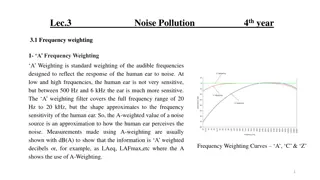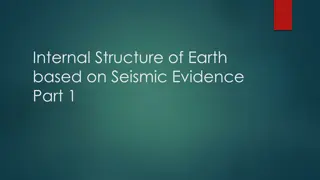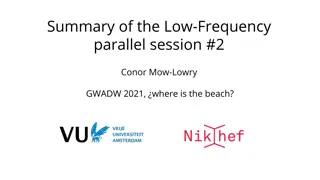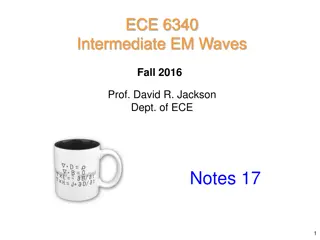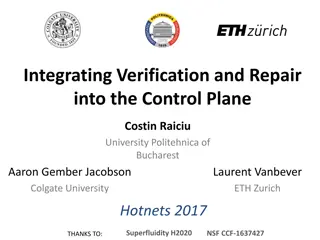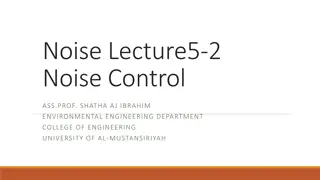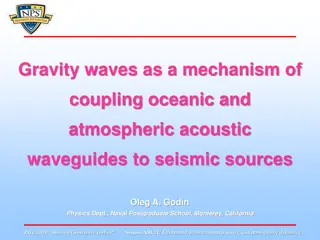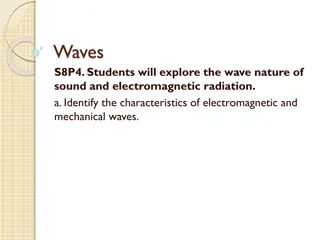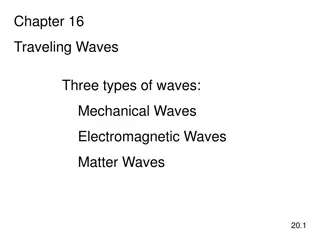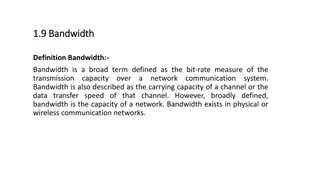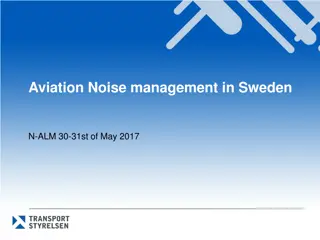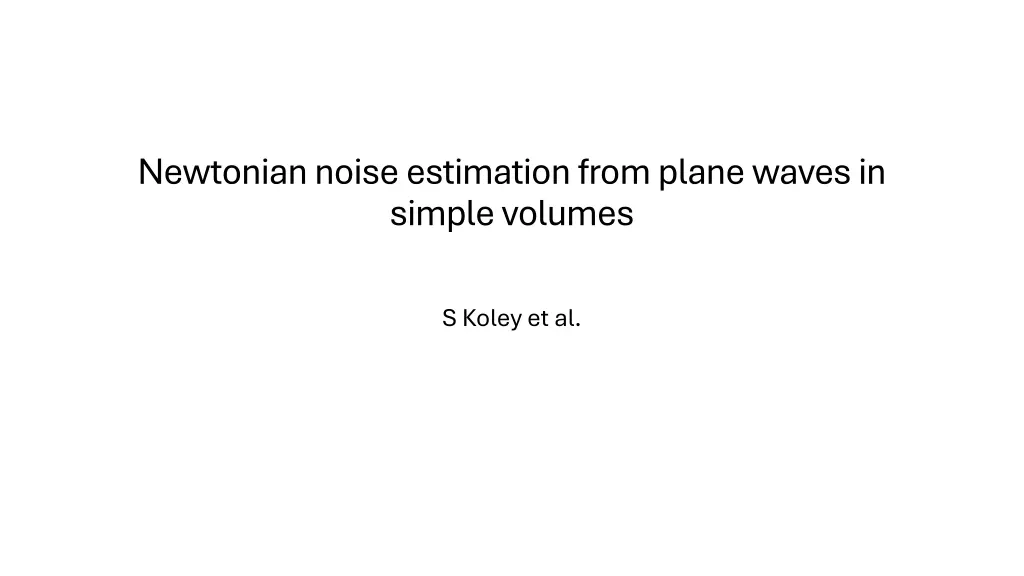
Understanding Newtonian Noise Estimation in Simple Volumes
Learn about noise estimation in simple volumes, calculating Newtonian acceleration, surface terms, and sandwiched layers in this insightful scientific discussion.
Download Presentation

Please find below an Image/Link to download the presentation.
The content on the website is provided AS IS for your information and personal use only. It may not be sold, licensed, or shared on other websites without obtaining consent from the author. If you encounter any issues during the download, it is possible that the publisher has removed the file from their server.
You are allowed to download the files provided on this website for personal or commercial use, subject to the condition that they are used lawfully. All files are the property of their respective owners.
The content on the website is provided AS IS for your information and personal use only. It may not be sold, licensed, or shared on other websites without obtaining consent from the author.
E N D
Presentation Transcript
Newtonian noise estimation from plane waves in simple volumes S Koley et al.
Problem definition We want to calculate the Newtonian acceleration at the point ?0 due to the displacement field ?( ?,?) in volume ?1 The surface ?1 separates the medium into two different densities ?1 and ?0, but in principle ?1 can be equal to ?0 ? ?0 ?1,?1 We assume that density fluctuations ?? due to the displacement field is much less than the static density ? ? The directions of the normal to the surface ?1 remains unchanged due to the displacement field ?1 ?0 ? ? ?,? ? ? ? ?03( ? ?0) 1 ? ?,? 3 ???0 ? ?,? ???0 ? ? ?0,? = ??1 ?? ??0 ? ?03 ?1 ?1 ? ?0 | ? ?0| Where ???0=
Key points about the surface term ? ?,? ? ? ? ?03( ? ?0) 1 ? ?,? 3 ???0 ? ?,? ???0 ? ? ?0,? = ??1 ?? ??0 ? ?03 ?1 ?1 surface term The surface integral arises just because we decide to integrate up to a finite boundary In principle if the medium extended to infinity and we would integrate to infinity then the surface term would not be necessary For a finite boundary of integration, the surface term does not reduce to zero; rather it is scaled almost equal to the displacement at the integration boundary Practically a part of the integration boundary will be close to the surface of the Earth, and we can get significant displacement at the boundaries This same evaluation can be done for several regions of constant density to obtain the Newtonian acceleration from a volume with complicated density distribution
Newtonian noise from a layer sandwiched between two other layers We want to the Newtonian acceleration at point ?0 due to the volume ?2, sandwiched between ?1, and ?3 ?1,?1 ? ?21 The displacement field is ? ?,? and lives in all the volumes The volume contribution is same as before ?2,?2 However, we get surface terms for 3 different cases ? ?23 ?3,?3 ? ?,? ? ? ? ?03( ? ?0), ? ??23= ??3 ?23 ? ?,? ? ? ? ?03( ? ?0) ? ??21= ??1 ?21 We also have surface term from the side faces, if we have a finite integration volume The same can be applied for volumes ?1 and ?2 and across each interface we get a surface term between volumes ?1 and ?2 ? ?,? ? ? ? ?03( ? ?0) ? ??1 2= ?(?1 ?2) ?1 2
Same setup as before, but a cavity is present in ?2 Volume ?2 now has an additional surface shared with the cavity, which has a material with density ?? ?1,?1 ? ?21 Hence, besides the surface terms mentioned in the previous slide, we get a surface integral as: ? ?,? ? ? ? ?03( ? ?0) ?? ?2,?2 ? ???= ??? ?21 ? ?23 If the density of the material inside the cavity is close to zero, then we don t have a separate cavity surface contribution ?3,?3 ? ?,? ? ? ? ?03( ? ?0) Note that there is no surface term like ??2 ?? The surface term arises from manipulation of ?, since the displacement field does not live inside the cavity we don t get such a term The only modification in the result is due to the missing volume which comes from the volume integral
Plane waves in homogeneous half space P-wave displacement field ? ?,? = ?0exp(?(?? ? ?))) ?, ? is the wavenumber vector with ? = ?/? ? = (????????, ????????, ????) S-V wave unit displacement vector ? = (????????, ????????, ????) S-H wave unit displacement vector ? = ( ????, ????, 0)
NN from P-waves in +x direction Integration domain ?,? ? 4000,4000 m, ? ? 0, 8000 m Cavity at depth of 250 m, radius of cavity is not important for ? P-wave velocity = 4000 m/s, ? = 2800 kg/m3, ?0= 1 m/ Hz ? 1 Eqn used for NN from body waves ? ? ?0,? = 4?/3??(2 ??( ?0,?) ??( ?0,?)) For only P-waves, this reduces to 8?/3?? ?( ?0,?)
NN from SH-waves in +x direction, displacement field in +y direction Integration domain ?,? ? 4000,4000 m, ? ? 0, 8000 m Cavity at depth of 250 m, S-wave velocity = 3000 m/s, ? = 2800 kg/m3, ?0= 1 Hz For only S-waves, ? ? ?0,? reduces to 4?/3?? ?( ?0,?) m A SH wave in an infinite medium produces no NN, in this case the NN is due to the missing volume in the cavity Note that even if we made the cavity deep enough to recreate NN from an infinite medium you don t get NN = 0, which is because of the domain discretization
NN from SV-waves in +x direction, displacement field in +z direction Integration domain ?,? ? 4000,4000 m, ? ? 0, 8000 m Cavity at depth of 250 m S-wave velocity = 3000 m/s, ? = 2800 kg/m3, ?0= 1 m/ Hz We observe that NN in x, and z direction is lower than 4?/3??
To dos Even if a plane wave model would be applied for EMR we need to know more about the underground wavefield Joint analysis of a surface seismic array and the underground station at Terziet Estimate P, SV, and SH waves contribution to the underground wavefield Perform the calculations for many plane waves (1000 waves per realizations, up to 100 realizations) A stochastic field will return realistic correlations for the underground displacement field Find an appropriate way to preserve the underground amplitudes and correlations Instead of uniform density, use a layered model density Will reduce NN further, we assume uniform density of 2800 kg/m3


